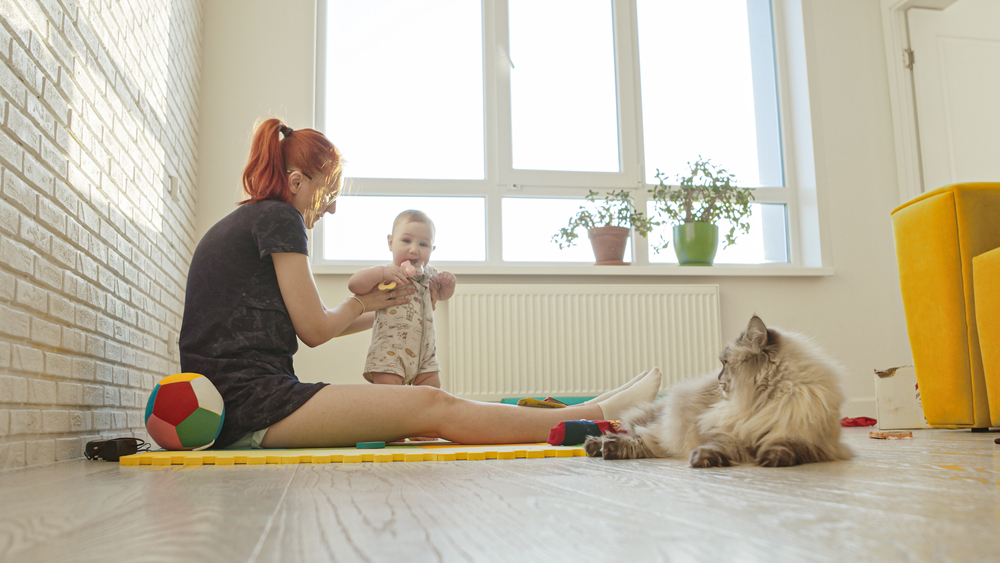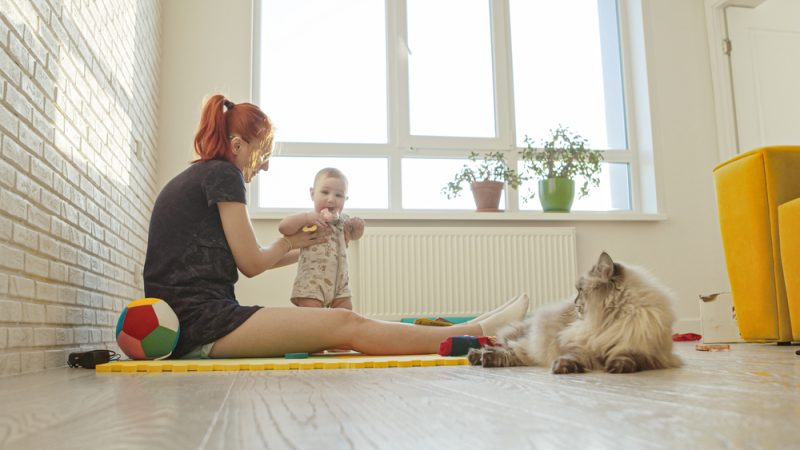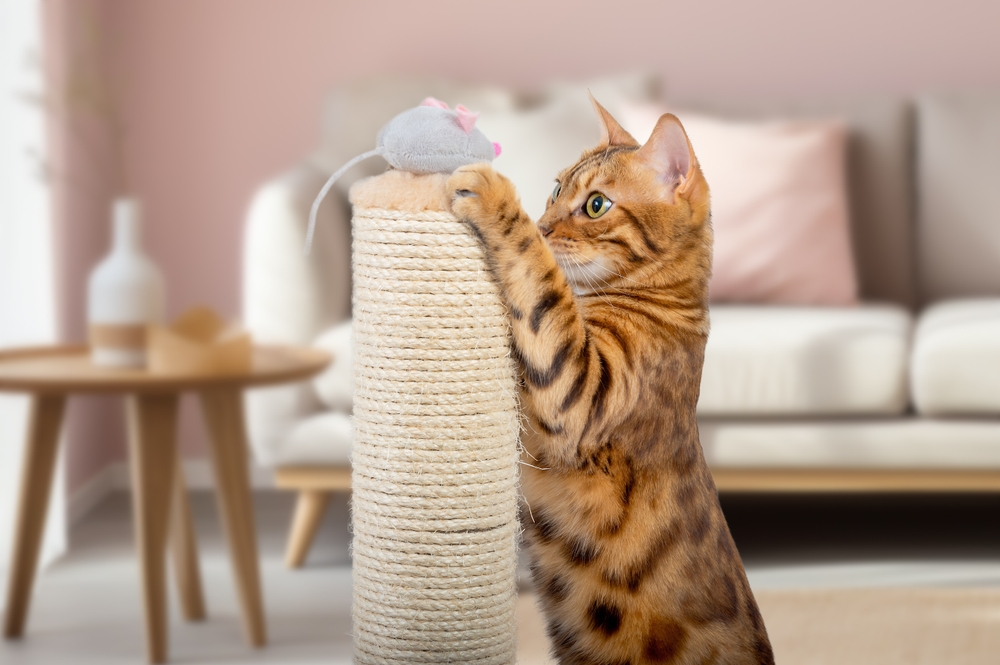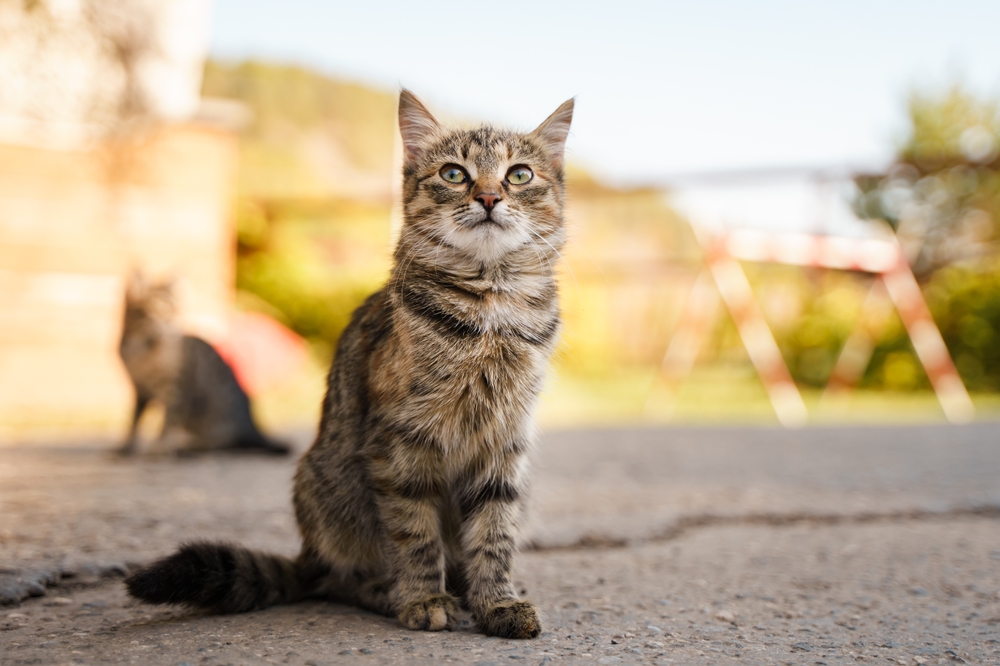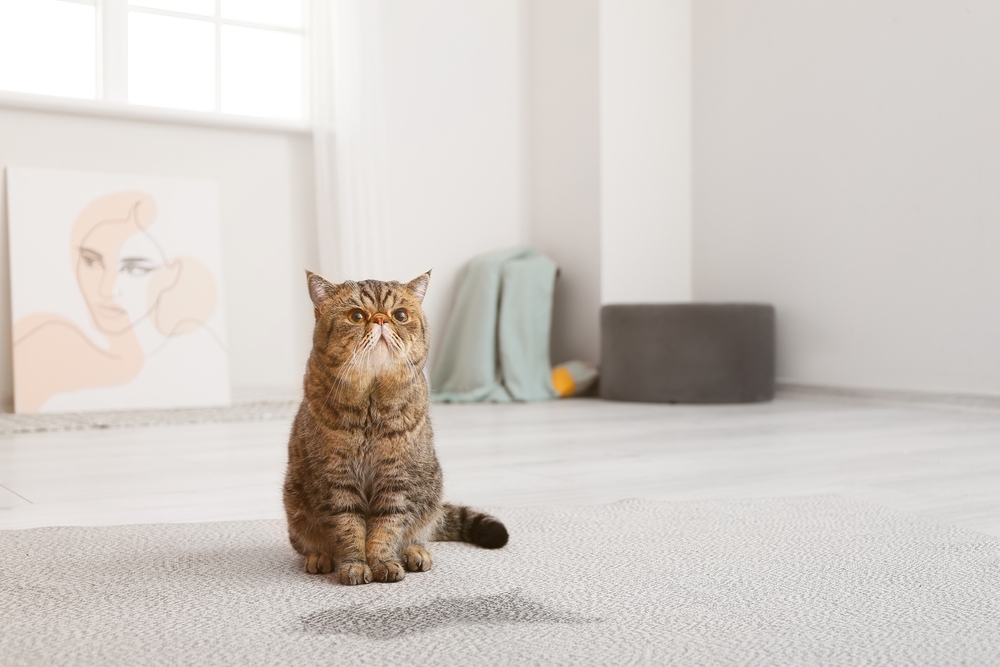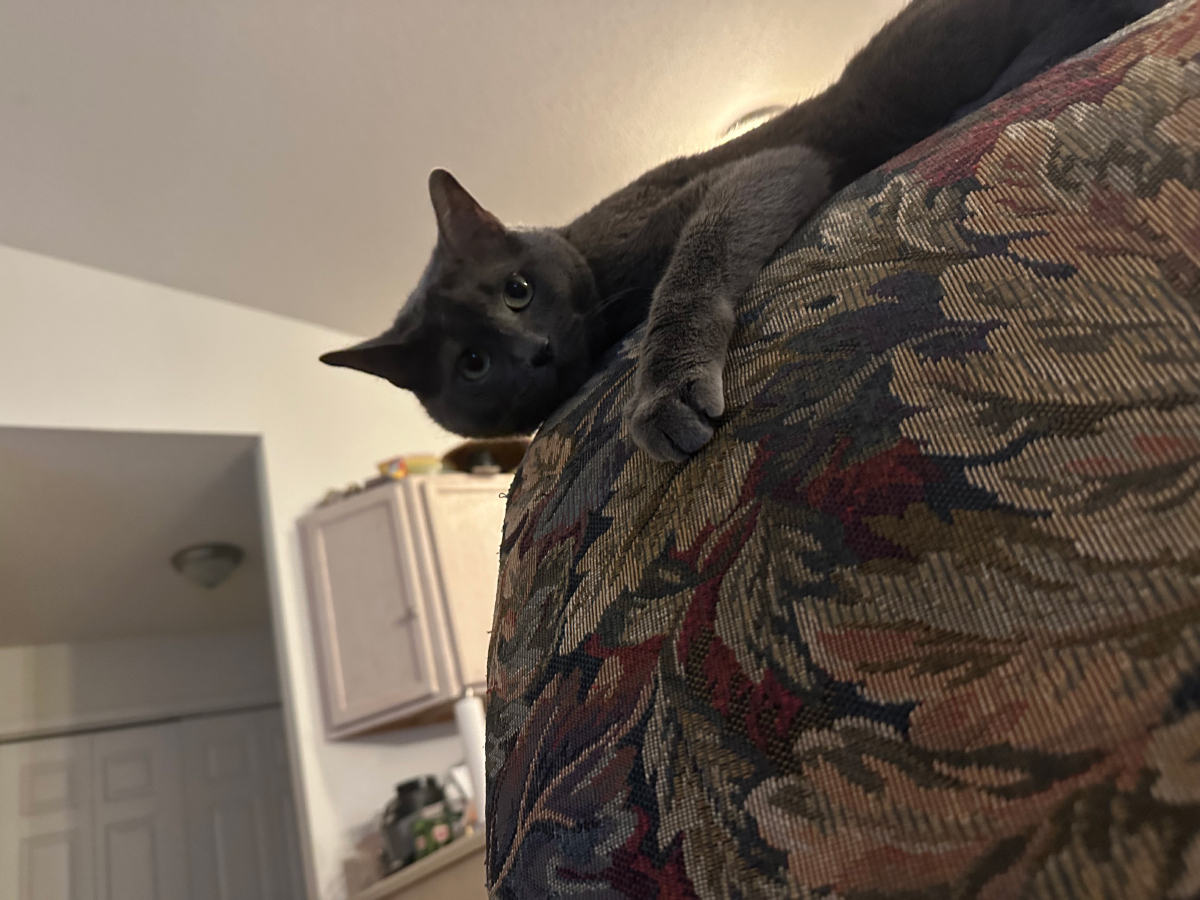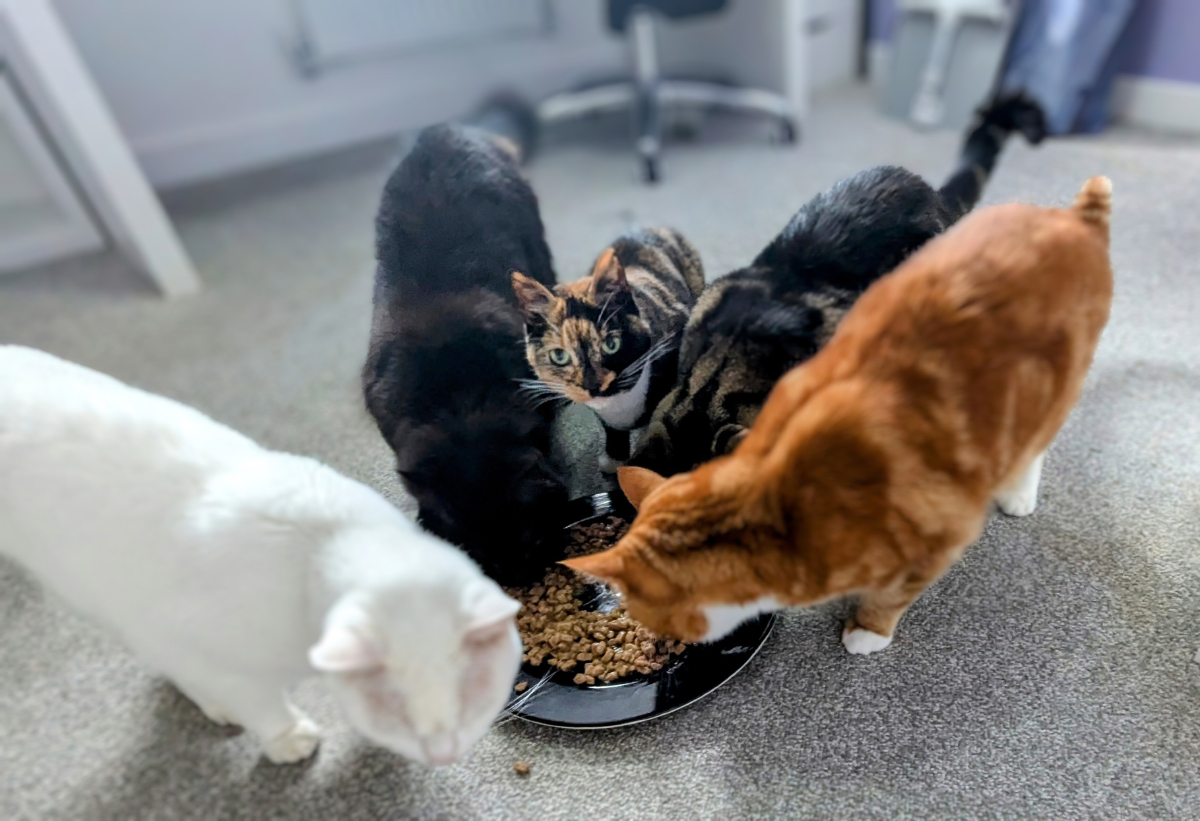Click to Skip Ahead
If you are bringing a new bundle of joy home from the hospital soon, you might wonder how your feline family member will get along with a newborn. Is it safe to have cats around newborns? Worse, can the mere presence of a cat in the home make your baby sick?
Cats can pose multiple potential health risks when you have infants in the home. Keep reading to learn more about the dangers that cats pose to babies and what you can do to minimize your infant’s risk.
The 7 Dangers Cats Pose to Babies
There are several ways that cats are dangerous to babies, so you want to think about whether having your cat around your baby frequently is a good idea. Below are 7 of the most common dangers associated with cats and infants.
1. Toxoplasmosis
Toxoplasmosis is perhaps the single most important concern for pregnant women in relation to cats. Toxoplasmosis is a disease caused by a parasite known as Toxoplasma gondii. This small parasite is found worldwide and can infect virtually any warm-blooded animal. However, felines are the only hosts in which this parasite can undergo sexual reproduction.
This parasite is of major concern for pregnant women because if they get infected during or just before pregnancy, it can affect their fetus within the uterus. Perhaps even more complex is the fact that a cat that is actively shedding the parasite can appear apparently healthy. In fact, kittens and severely immunocompromised cats are likely the only types of cats that would display signs of an active infection by the parasite. Even then, there is no one specific sign that is specific to this parasitism.
Nonetheless, it’s good to know these signs:
- Fever
- Cough
- Diarrhea
- Labored breathing
- Yellow mucous membranes (jaundice)
Please note that the signs above are very rare. In most cases cats don’t show signs of an infection. In extreme cases, very immunocompromised cats might also be prone to seizures.
You can also consult a vet online if you need quick and easy access to an expert’s opinion.

If you need to speak with a vet but can’t get to one, head over to PangoVet. It’s an online service where you can talk to a vet online and get the personalized advice you need for your pet — all at an affordable price!
A cat that’s infected with the parasite will begin shedding the parasite eggs (known as oocytes) 3 days post-infection up until 20 days post-infection. After this, cats no longer shed the parasite and tend to develop lifelong immunity to the parasite as well. This means a cat almost always sheds the oocytes only once in their lifetime.
- Avoid stray or feral cats (especially kittens)
- Pass on a pet cat’s litter box cleanup to someone else; they should clean out the litter box every day
- Wear gloves if nobody can help you with litter box duties; disposable gloves are best
- Whoever in the house is in charge of litter box upkeep should thoroughly wash their hands with a disinfectant soap on a frequent basis (but especially after handling the box)
- Keep your cat indoors
- Do not have your cat on a raw meat diet during this time
Additionally, pet cats can be tested for the parasite, if needed. However do take note that they will almost always test positive for antibodies against the parasite, and your veterinarian can only diagnose them as actively infected based on several diagnostic tests.
For more information about toxoplasmosis, you are strongly advised to consult your healthcare provider. If you have a pet cat, you should also have a conversation with your vet about toxoplasmosis.

2. Toxocariasis
Another parasitic ailment often confused with toxoplasmosis is toxocariasis. Toxocariasis is an infection of roundworms.
- Toxocara cati
- Toxocara leonina
- Toxocara malaysiensis – only in cats in parts of eastern Asia
The most important of the three roundworms affecting cats is Toxocara cati because it is the most common and because it is zoonotic.
Eggs from the roundworm will pass into your cat’s feces and can live for a long time. People, or babies, can swallow these eggs if they touch a contaminated surface. This happens more often in playground-age children, but babies can also develop toxocariasis.
When the eggs are swallowed, they pass into the intestines and hatch into larvae. The larvae will enter the intestinal wall and bloodstream, enabling them to travel to other areas of the body. Their lifespan is considerably long for a parasite.
Fortunately, almost all deworming protocols and environmental decontamination practices (as prescribed by your vet) are very effective at controlling roundworms in cats. Do take note though that many natural or holistic practices for decontamination of the environment or deworming a cat are not proven to be statistically effective and may not guarantee your infant’s (or your cat’s) safety.
It is also important to note that cats who roam outdoors have a higher risk of contracting the worms (from the environment or other animals they interact with).
3. Cat Scratch Disease
A common way that cats can make babies sick is from cat scratch disease (CSD), this is caused by a bacterium known as Bartonella henselae. People become infected with Bartonella henselae from the scratch of a cat that has fleas. This is because the bacterium is actually carried by fleas. These bacteria can be transmitted from a cat to a person during a scratch that is contaminated with flea feces (poop).
Because cats may also lick areas where fleas bite them, a cat that’s infested with fleas may also infect a person if they lick a person’s open wound or bite them. Some evidence suggests that these bacteria may spread directly to people by the bite of infected cat fleas, but this has not been proven.
Since fleas play a very important role in the transmission of this disease, the easiest way to safeguard your infant from this disease is by ensuring that your cat is checked for fleas (by your vet) and treated for fleas (if found to be infested with fleas).
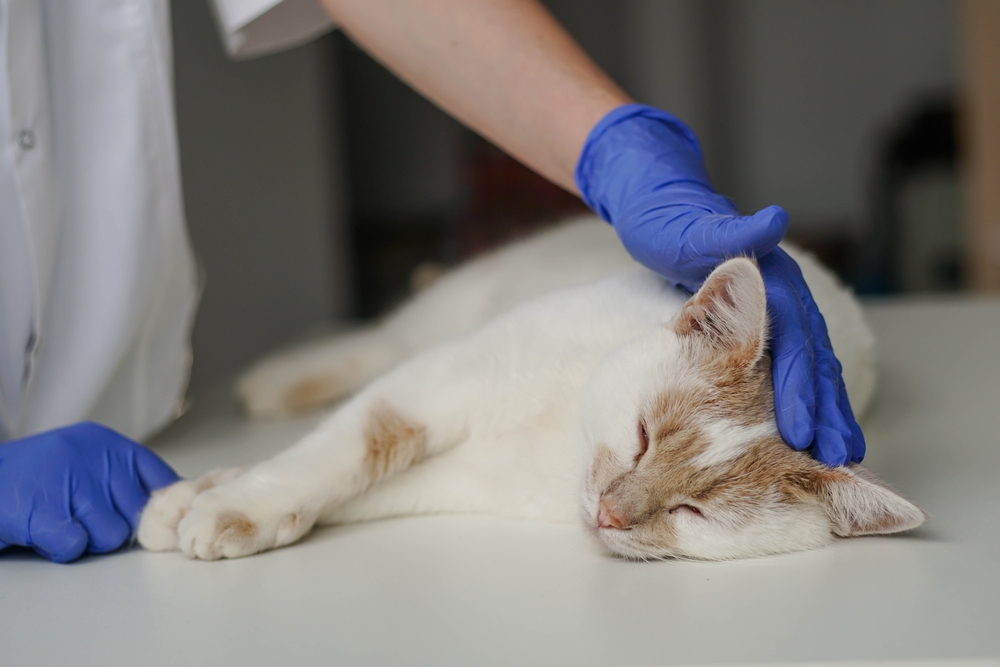
4. Dermatophytosis (Ringworm)
Ringworm is a common fungal skin infection easily recognizable by the red ring-like rash it produces in humans. In cats, it is caused by Microsporum canis. Cats with ringworm will likely need to be treated with topical and oral therapy (as prescribed by your vet). Please note that in cats, ringworm doesn’t necessarily appear as it does in humans; there may be no round demarcation on your cat’s skin.
A cat’s ringworm treatment cannot be used on humans or an infant. Instead, seek advice from your doctor or pediatrician if your cat has spread the fungus to you.
5. Flea Bites
Fleas on a cat may also bite an infant and cause an infant distress and pain. However, fleas are considered host preferential. A cat flea would prefer to feed on a cat whenever possible and therefore, the odds of the fleas actively seeking an infant to bite is somewhat low. However, an infant’s warm, comfortable bedding might attract a cat that’s infested with fleas. The flea eggs may then fall on the bedding, and the flea larvae may infest your infant’s bedding.
The prevention for flea bites is the same as that of cat scratch disease and involves treating fleas on a cat and thoroughly disinfecting your house. It’s also worth reiterating that cats that roam are more likely to contract fleas and therefore, ensuring your cat is an indoors-only pet can work wonders for minimizing the risk for your infant.
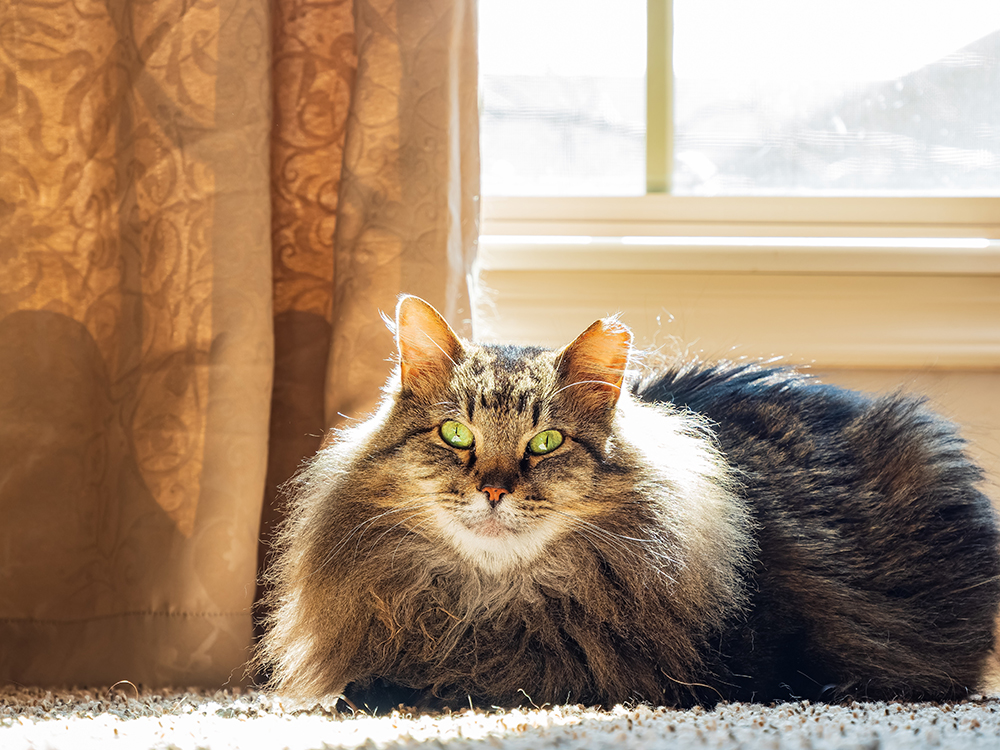
6. Suffocation
One of the more obvious ways that cats are dangerous to babies is suffocation. You mustn’t ever give your kitty access to the room with your sleeping baby inside. You never know when your well-meaning kitty might feel it necessary to snuggle up with this warm human. This can interfere with your baby’s breathing and hypothetically even suffocate them. Though this does seem far fetched to some, it has been recorded in literature.
Don’t let your cat sleep on anything that belongs to your baby, including the crib, swing, or bassinet. The sooner you can set these boundaries, the better.
7. Bites & Scratches
It is worth mentioning that even if your cat is perfectly healthy and disease free, bites and scratches can still be harmful to your baby because they hurt. Bites and scratches that draw blood are obviously things that warrant medical attention for your infant.
Cats may bite or scratch for various reasons. However, ultimately this does come down to the individual cat in question. As a safeguard though, it bears repeating that your cat needs to be monitored when they are in the presence of your infant.
Additional Tips to Keep Your Baby Safe Around Your Cat
Let’s look at additional steps and precautions you should be mindful of when it comes to your cat and your infant.
Have Constant Supervision
It bears repeating that you should never leave your newborn in a room alone with your cats unsupervised. As much as you think you know your cat’s personality inside and out, they can still be unpredictable. They may have never lashed out at you, but you also likely don’t scream and cry all day and night or smell like pee or poop all the time.

Provide a Safe Place for Kitty
You should also give your kitty a safe, baby-free place to retreat when needed. If you have kids already, you know how overstimulating a newborn can be (and if you’re a first-time parent, you’ll soon find out). You are capable of understanding that babies crying is just a normal part of parenthood, but your cat has no way of knowing that. Having their own sanctuary to retreat to when they’re overstimulated will give them a place to cool down when things get loud.
Paying close attention to where your cat enjoys sleeping is part of the magic in finding them a bed that's suitable to their individual needs. Factoring in their comfort requirements, length of naps, and where they prefer to be when they rest are considerations you must take when choosing the purrfect bed! After plenty of research, the Hepper Nest Bed was our top pick for practicality, design and comfort.
- HAPPY COZY CATS - Your kitty will bask in luxurious sherpa-lined comfort while feeling warm, safe,...
- MODERN DESIGN - Contemporary styling with upholstered fabric construction; just like your human...
- WARM FLEECE LINER - Self warming, thick sherpa fleece with microfiber trim.
The modern design of the Hepper Nest Bed was thoughtfully created for maximum coziness that provides cats with a safe sanctuary of their own to retreat to when necessary. Molded into a comfy bowl shape that cradles your cat with a self-warming fleece insert, you’ll have a hard time getting your cat up from their daily naps. One of the Nest's best features is that is portable - meaning you can easily provide your cat with a comfortable place to sleep, regardless of where they plan to catch some zzz's!
At Catster, we’ve admired Hepper for many years and decided to take a controlling ownership interest so that we could benefit from the outstanding designs of this cool cat company!
Prepare Kitty in Advance
A newborn throws a wrench into your kitty’s predictable life. Your pet won’t be used to the new smells and sounds that accompany a baby, so the more preparation you can do before the baby is born, the better.
It might help to play recorded sounds of babies crying so your cat will not be as startled when they hear this sound every day. Some people also say that it’s beneficial to turn on your baby’s electronic devices (e.g., infant swings) for several minutes daily.
Even if your cat is your fur baby, consider handing over some of their daily care tasks to your partner. This will hopefully help prevent feelings of jealousy that your kitty may develop once your baby is home, as they won’t think that you’re rejecting them if your partner takes care of your typical cat-related tasks.
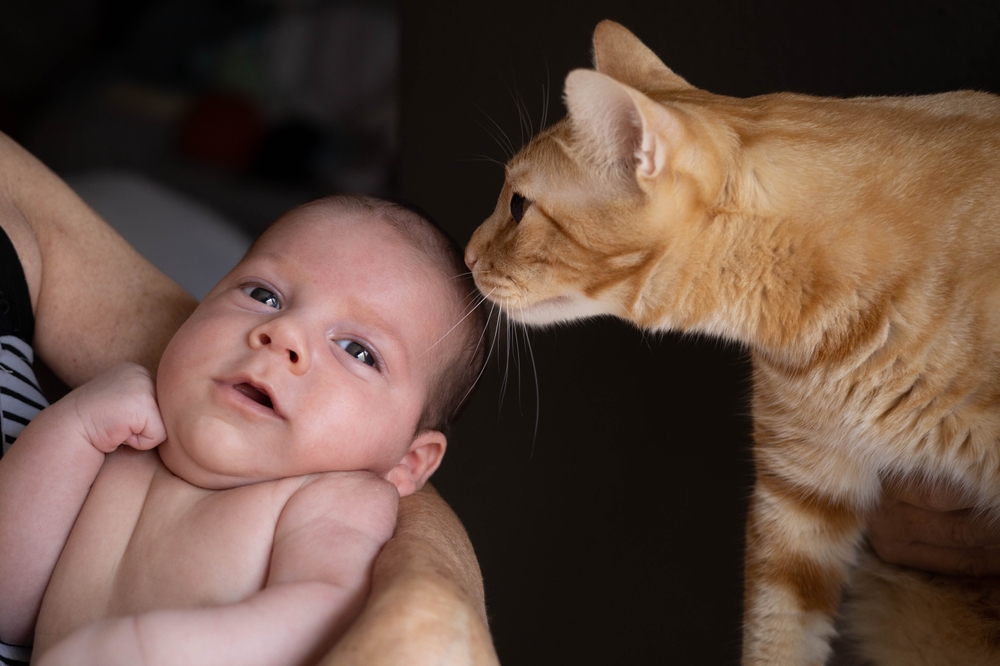
Shutterstock
Spend Time With the Cat
Your attention will be solely focused on the tiny human you brought home from the hospital for the first several months of their life. So, you will need to set aside some time every day to spend with your kitty without the baby in tow. Your pet will appreciate having your undivided attention, which may make them less likely to feel abandoned or lash out aggressively.
Final Thoughts
Cats can pose health risks to newborn babies and children, but with proper hygiene and care, many of these risks can be minimized (but they should not be overlooked). Broadly speaking, an indoors-only, vaccinated, dewormed, and flea-free cat is the least risky for your infant. However, you should work closely with your doctor and veterinarian for issues such as toxoplasmosis.
Above all, don’t let your cat come too close to your baby when you’re not actively supervising. Ensuring your cat has their own space and your baby’s room is off limits to your cat will also add an extra layer of security, which is definitely recommended. Keep in mind that many diseases cats can pass to humans (and infants) are not easily noticeable, and therefore, routine veterinary visits for your cat are recommended as well.
Featured Image Credit: KONSTANTIN_SHISHKIN, Shutterstock

